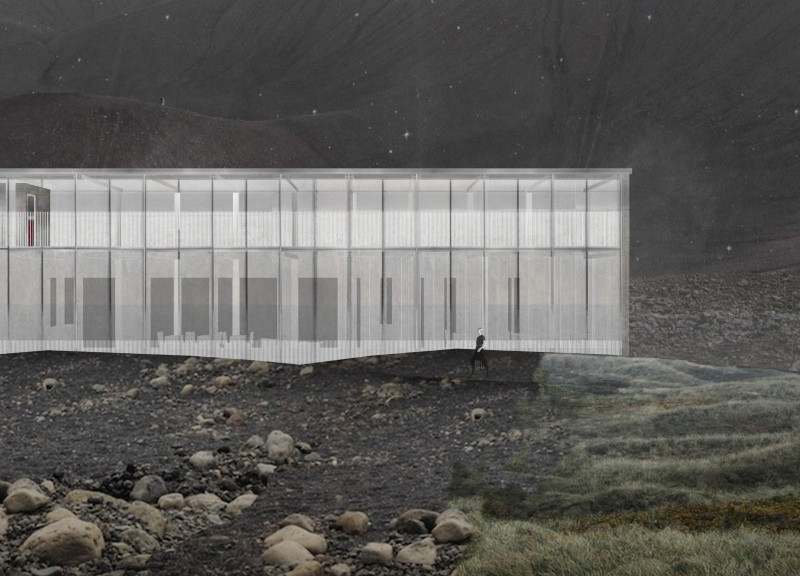5 key facts about this project
The design located in Reykjahlio integrates into a landscape marked by plant steppes, rocky formations, lakes, and thermal baths. Its purpose spans both exhibition and visitor engagement, aiming to establish a connection between the structure and its natural surroundings. The overall concept focuses on architecture as an extension of the landscape, inviting interaction with its vastness and unique climate.
Design Approach
The pavilion focuses on creating a strong relationship with the surrounding environment. By interpreting the various layers of the landscape, the project aims to provide a sensory experience that reflects the area’s characteristics. The design is shaped by the regional climatic conditions influenced by the Gulf Stream, enhancing the building's appropriateness to its location.
Material Use
Materials chosen for the project serve to address local climate challenges. One notable material is matte aluminium, which acts as a reflective surface, reducing heat absorption. In contrast, concrete, wood, and raw earth make up other parts of the structure, offering warmth and retaining thermal energy. This careful selection promotes functionality while enriching the experience of the exhibition spaces.
Spatial Design
The layout of the building incorporates different elevations to encourage movement and interaction with the landscape. Parts of the pavilion are placed lower in the ground to take advantage of the earth's thermal properties and create a connection with the natural terrain. Additionally, a small metal and glass structure runs parallel to the road, housing a café and exhibition room. This configuration allows for direct views of the landscape, enhancing visitor engagement with the environment.
Interior Spaces
Inside the pavilion, spaces are designed to be neutral in character. This simplicity promotes a calm atmosphere and complements the vibrant natural surroundings. Each area is crafted to provide an immersive experience, allowing visitors to appreciate the relationship between the architecture and the landscape. Design details emphasize practicality and clarity, contributing to an architecture that reflects its environment.





















































